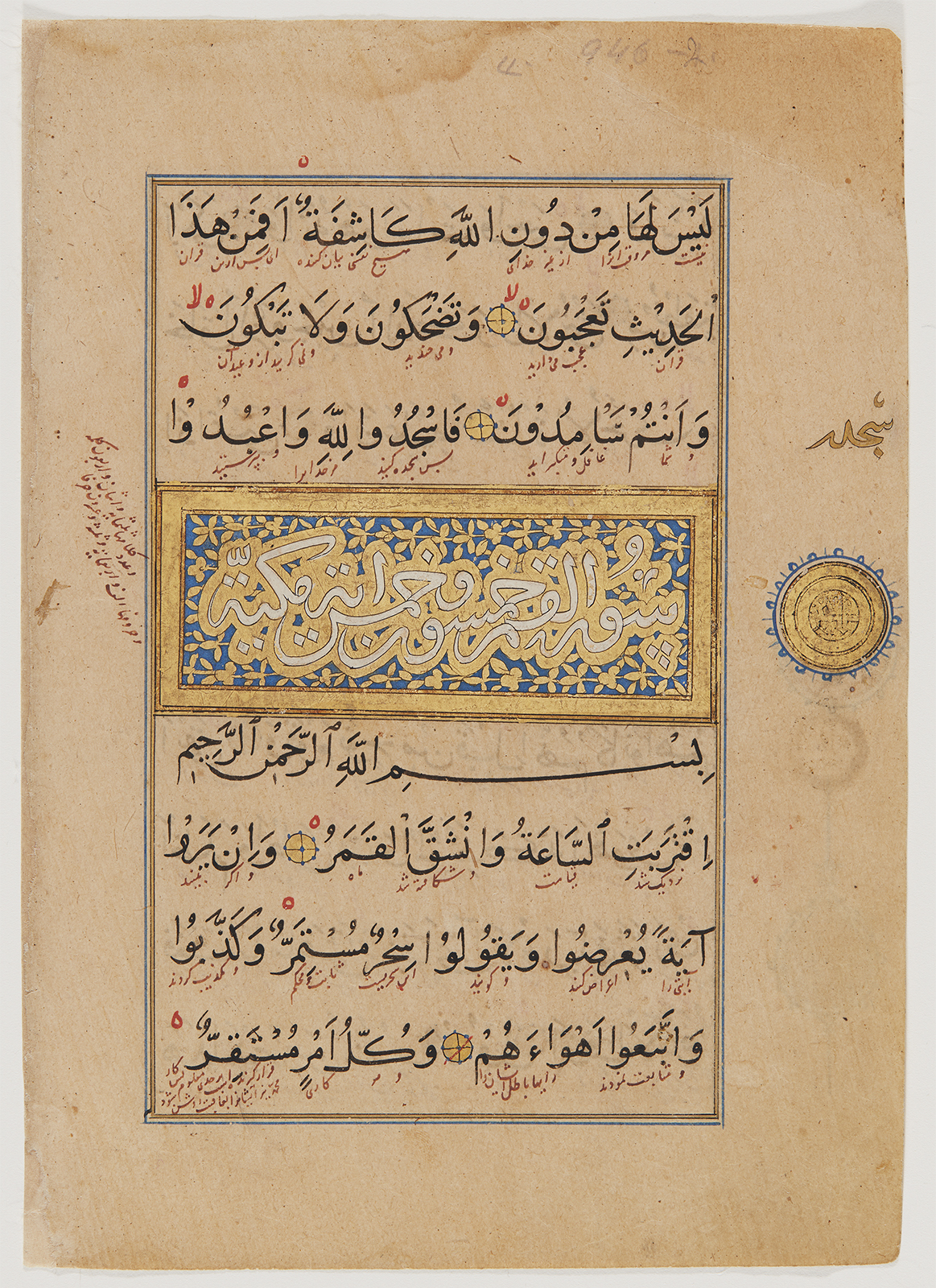Click on the image to zoom
Folio from a Qur’an Manuscript
- Accession Number:AKM313.1
- Place:Iran
- Dimensions:17.6 x 11.9 cm
- Date:15th century
- Materials and Technique:opaque watercolour, ink, and gold on paper
This folio shows the beautifully decorated title and first three verses of Surat al-Qamar (the Chapter of the Moon), the 54th chapter of the Qur’an. The chapter’s title — which provides the chapter’s number of verses (55) and its place of revelation as Mecca — is executed in a large white thuluth script in an illuminated panel decorated with golden vines on a blue background.
Further Reading
In the right margin, above a gilt medallion, the gold-painted word sajda marks a prostration during recitation of the Qur’anic text. Moreover, a note written in Persian in the left margin computes the sura’s total number of words and letters, which often carries symbolic meaning or talismanic powers. This note in Persian echoes the Persian translation of the Qur’anic verses, which are executed in red ink in nasta‘liq script and placed in between the lines of Arabic. This Qur’an’s nasta‘liq script and its bilingual content suggest a manufacture in Persianate lands, especially in Timurid-period Iran (i.e., ca. 1400–50).[1]
Surat al-Qamar describes the splitting of the moon as a sign of the imminent apocalypse and a miraculous confirmation of Muhammad’s prophethood. The catastrophic event serves as a warning to non-believers to adhere to the Qur’an before the Day of Judgment. The chapter ends with promises for the righteous, who will remain unscathed in the garden of Paradise near God.
The first three verses seen here introduce the sura and describe the impending signs of the “hour” (al-sa‘a), among them the splitting of the moon:
The hour has come and split is the moon (anshaqqa al-qamar)
But if they see a sign they turn away
and say: “This is the same old lie continuing,”
and deny, and follow their own vain desires;
but every matter is determined at its time.[2]
— Christiane Gruber
The Aga Khan Museum Collection has two folio from this Qur’an Manuscript, see AKM313.1 and AKM313.2
Notes
[1] For similar Qur’ans made in Persianate lands during the 15th and 16th centuries, see David James, After Timur: Qur’ans of the 15th and 16th Centuries, Nasser D. Khalili Collection of Islamic Art, vol. 3 (London and New York: I.B Taurus, 1992). ISBN: 9780197276020
[2] English translation from Ahmed Ali, Al- Qur’an (Princeton: Princeton University Press, 1993), 458. ISBN: 9780691074993
Note: This online resource is reviewed and updated on an ongoing basis. We are committed to improving this information and will revise and update knowledge about this object as it becomes available.


